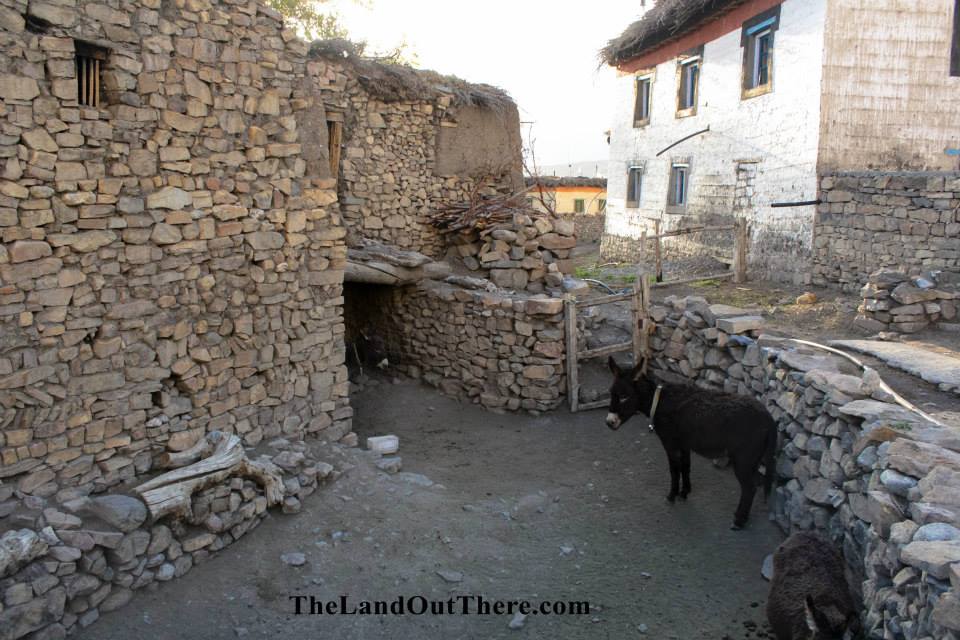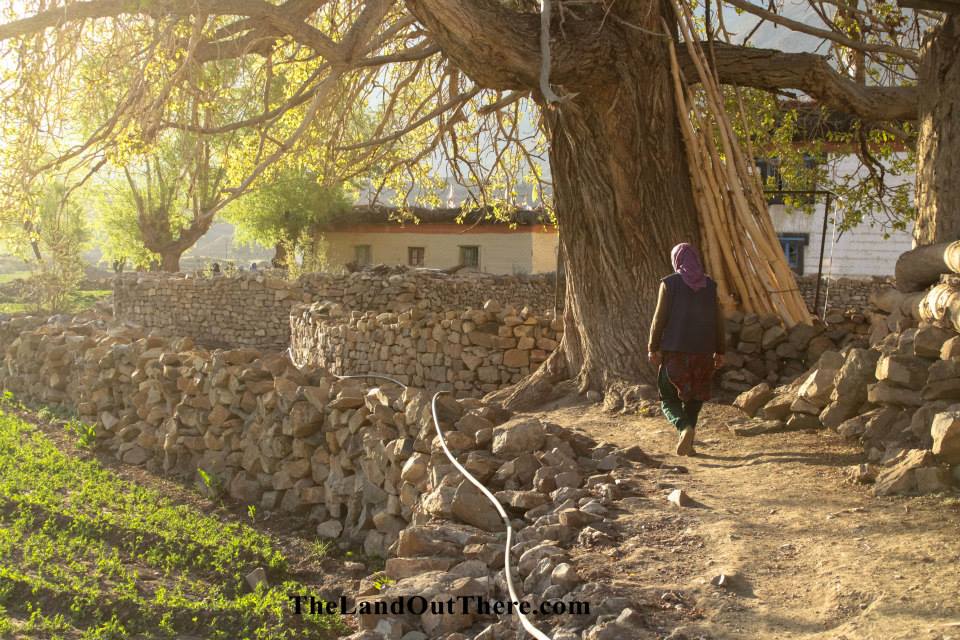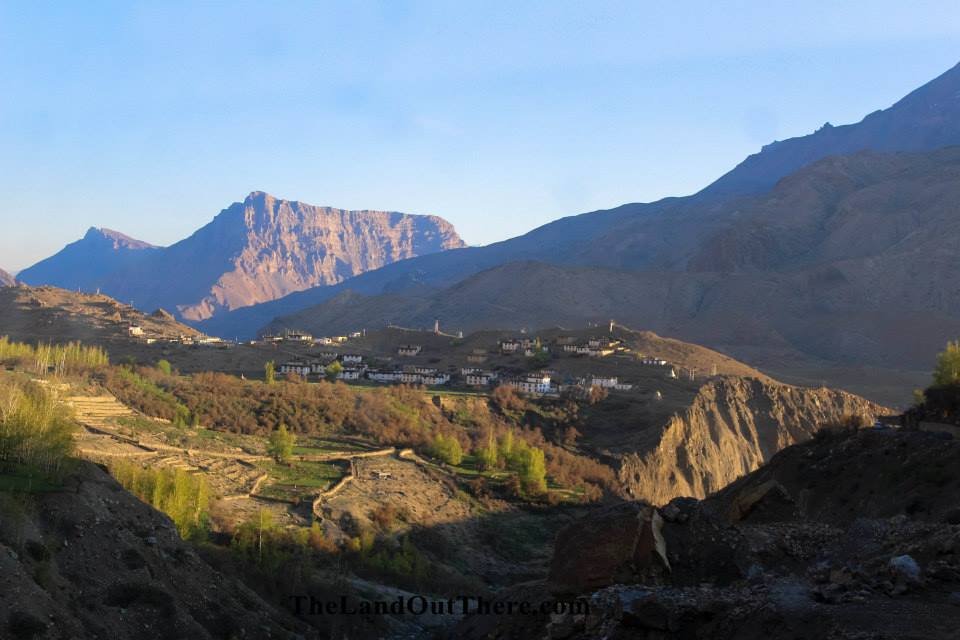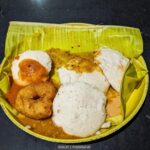
The prettiest village in Spiti Valley: Mane, Himachal Pradesh
Located deep within the Trans-Himalayan region of Spiti Valley in Himachal Pradesh is the unheard offbeat village of Mane which locals claim is the prettiest village in the region. Mane is located at a towering altitude of around 9,537 feet above sea-level.
Mane
is located 45 km from the town of Kaza on the other side of the Spiti River. The only way of getting to the village is by hiring a private taxi from Kaza, since no government buses from anywhere ply to the village of Mane.

To reach the village of Mane cross the Spiti River taking the same bridge which leads to the village of Mud and Pin Valley national park. After crossing the bridge turn left, follow the unpaved uphill winding road to the village. The drive to the village of Mane is extremely picturesque but the steep, bumpy and winding roads makes the ride a nightmare for rookie travellers.
The first thing travellers will notice in Mane is the barren mountains covered in various shades of yellow and gold. The village has a very calm and peaceful feel to it. The main attraction here is the Monastery or Gompa which is located on top of a small hill lock in the village.

The villagers in Mane live a very simple and content life. The main occupation in the village is animal husbandry and farming. The village has fields which grow cabbage, potato and carrots.
While strolling through the village lanes, one will find plenty of animal hide being dried in the hot sun for weeks. Once the hide dries up, villagers use it to make jackets and blankets to keep themselves warm during the extreme winter when the mercury drops to well below -35°C.

The village of Mane has no school so the children are sent to boarding schools in the town of Kaza or Tabo. The village of Mane has around 50-60 houses, all of which are white in colour and have red windows which symbolises that everyone in the village is a follower of Buddhism. Each house has a fencing made of small stones and also a small animal pen made out stones. Nearly each and every family in the village owns at least a pair of donkeys.
All the villagers in Mane converse in the local language which is called Bodi or Bodhi. The language is a trade language which is a mix of Tibetian, Mongolian and bits and pieces of Hindi and Chinese.

Since virtually, no one from outside comes to this village, Mane has no guest houses or hotels and the best way to get accommodation in the village is to befriend a local and spend a night with the family in their house. The villagers are not used to seeing travellers and hence are very shy to begin with but once you break the ice they are more than happy to welcome you inside their house for a cup of tea.
Mane has no restaurants or Dhabas and the only provision for food is from a family in the village. Generally, the family that welcomes you into their humble home will also provide you with meals. Lunch and dinner is generally – Rajma dal, roti, rice and cabbage as the vegetable on the plate.

The best time to visit Mane is during the summer months from June to September when the weather is good and the road conditions are fine. Here, woolens are required even during the summers since post noon then temperature changes drastically.
The village of Mane has nothing much to offer from the tourist point of view but has plenty to offer for a traveller. The best thing to do while in the village is to just stroll through the village lanes or spend time helping the villagers work in their fields. If soul searching is the purpose of your trip then the village of Mane is where you’ll find much more than your soul.
For a similar experience, >>Click here












Very interesting village in Spiti Valley
Beautiful write up. Animal hide for blankets wow!
Howdy! I know this is kind of off topic but I was wondering if you knew where I could locate a captcha plugin for my comment form? I’m using the same blog platform as yours and I’m having difficulty finding one? Thanks a lot!
Really informative and superb complex body part of subject matter, now thats user friendly